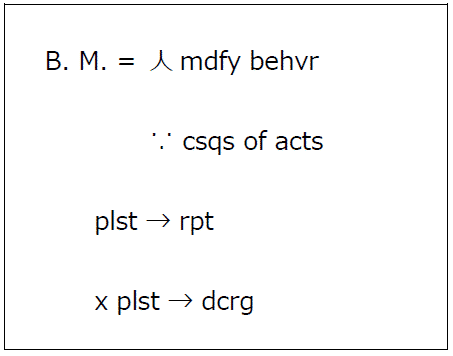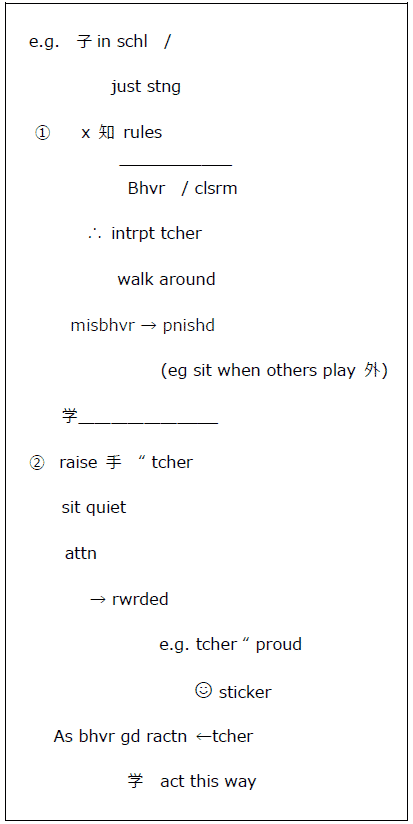Question 3のスピーキングって、どうすればいいの?どんな対策をすればいい?コツはあるの?テンプレートみたいなのないかなあ?
このような疑問に答える記事です。
Speaking Section 全般についての記事はこちらを、全4問の概要表はこちらを、Question 3 以外の Question に焦点を絞った対策は個別の記事をご覧ください(Q1、Q2、Q4)。
Speaking Section Question 3 の出題形式
Question 3の問題形式は、Question 2 と同様、(ア)読んで、(イ)聞いて、(ウ)話すという構成です。
しかし話題は、Question 2 と異なり、アカデミックつまり学術的で、大学一回生の授業で扱うような内容です。
自分(テストを受ける人)のすることをまとめると、
(ア)大学の教科書からの抜粋のような reading passage を読む。
(イ)その reading passage の内容を説明する教授の講義を聞く。
(ウ)教授が reading passage の内容をどのように説明しているかを、口頭で説明する。これがレスポンス(解答)。
ところで、読むパッセージに英語で言及するときは「the reading passage」でもいいし「the reading」でも構いません。
(ア)と(イ)は、授業のミニチュア版だと思えばいいです。大学では、授業に行く前に、学生は課された教科書の一部(例えば第3~4章だとか50~90ページなど)を読むことになっていて、授業ではその教科書の内容を教授が詳しく説明するというパターンが一般的です。(TOEFL iBT 対策で鍛えておけば、留学した時の授業にもついて行きやすいでしょう。)もちろん、TOEFL iBT Question 3 は、読むのも聞くのも分量は限られています。
全体の時間配分を見てください。
(ア)読む:45 または 50秒 (文章の長さ次第でどちらか)
(イ)聞く: 1~2分程
(ウ)話す:話す内容を考える準備時間30秒、レスポンスを話す時間60秒(Preparation Time: 30 seconds | Response Time: 60 seconds)
この(ア)、(イ)、(ウ)を、例題を使って具体的に詳しく見ていきましょう。
例題1
(ア)Reading Passage を読む
例題は、ETSが以前提供していたQuick Prep, vol. 2に含まれるものを使います。
まず、最初に聞こえてくるreading passageについての指示(実際のテストでは音声のみ)をしっかりと聞きましょう。この指示の中には、読むのに与えられている時間(45あるいは50秒)だけでなく、どういう分野・科目に関するreading なのかということ、あるいは、どういった概念や用語を概説するものなのかという情報が含まれています。高頻度の科目は、Biology、Psychology、Business 等です。
では、例題1のreading passageについての指示を見てみましょう(本番では音声だけです)。
Read a passage about revealing coloration from a biology textbook. You have 45 seconds to read the passage. Begin reading now.
この指示によると、分野は biology(生物学)ですね。そして、reading passage が説明しているのは「revealing coloration」という概念・用語だということですね。
Reading passage は、読む時間(45あるいは50秒)が過ぎたら画面から消えて、二度と戻ってきません。従って、重要なポイントを後で思い起こしやすいようにメモを取ることは賢明ですね(メモについてはこちらを見てください)。
Reading passage を読むときは、まずタイトルを見ましょう。タイトルが、この reading が概説している概念・用語です。(先ほどの指示の中で言及されていたものと同じです。)
では reading passage を読みましょう。持ち時間は45秒です。
Revealing Coloration
Many animals use coloration to protect themselves from predators. One defensive strategy involving the use of coloration is what is known as revealing coloration. Animals employing this strategy have an area of bright color on some part of their body; this bright color is usually hidden from predators’ view. When approached by a predator, the animal suddenly reveals the area of bright color; this unexpected display of color startles or confuses the predator and provides the would-be prey with an opportunity to escape.
メモは、例えば、このような感じで良いのでは。

内容を把握しましょう。「Revealing coloration」は何かというと、それは「defensive strategy」(自己防衛方策)であり、「bright color」を突然見せて「predators」(捕食動物)を驚かしたり混乱させたりするというもの。これによって、逃げることができるというわけですね。
次は lecture です。
(イ)講義を聞く
Reading の時間が終わるとすぐに、ナレーターが「Now listen to part of a lecture from a biology class.」のような事を言います。授業の科目は biology ですね。この指示も実際のTOEFL iBT では音声だけです。そしてすぐに講義が始まるので、気を緩めずに意識を集中させます
講義のパターン
教授は reading に記述された概念や用語を詳しく説明するために、具体例を挙げます。具体例は、2つの別個の事柄である場合もあれば、1つの事柄の2つ以上の側面や状況の場合(例えば子供の行動という1つの例のポジティブな行動とネガティヴな行動という側面)もあります。
具体例がどの様に概念や用語を説明するのかを聞き取りましょう。主なポイントのメモを取るのも賢明です。
この例題では、解答の仕方を分かりやすくするために、音声ではなくスクリプトを使っていきます。
講義のスクリプト
There’s a large tropical insect called the peanut bug — yes, like the peanuts that you eat — uh, and the peanut bug’s front wings are colored so that they blend in with their surroundings. But its back wings — which are usually closed and hidden — have these bright, colorful spots on them. And when the peanut bug’s attacked, it suddenly opens its back wings, and out pop these big, bright colors. And that surprises the predator, and gives the peanut bug a chance to get away.
Um, and then you have a butterfly … called the morpho butterfly. And parts of the morpho butterfly’s wings are very shiny, they reflect a lot of sunlight; when this butterfly is resting, this shiny part of its wings is hidden … Now, morpho butterflies are often attacked by birds … So when a bird approaches, the morpho flies away … and when the morpho flap its wings, all the bird can see are flashes of light reflected from the morpho’s wings. Those flashes of light make it very difficult for the bird to follow the morpho, and the morpho is usually able to get away.
メモは、例えば、このような感じで良いのでは。

講義の内容を把握しましょう。
この例題では、教授は2つの昆虫を具体例として挙げて revealing coloration を説明していますね。
• the peanut bug は、通常隠れている back wings に bright colors がある。攻撃されると、back wings を広げて bright colors で捕食動物を驚かせて逃げる。
• the morpho butterfly の羽根には光を反射する部分があるが、飛んでいないときはその部分が見えない。しかし攻撃され、羽ばたいて逃げようとすると、shiny parts が太陽光を反射して捕食動物を混乱させる。
(ウ)レスポンスを話す
教授の話が終わると、すぐにナレーターが設問を読み上げます。ヘッドホンから聞こえてくると同時に画面にも表示されます。レスポンス(解答)の時間が終わるまで画面に残っています。
Using the examples of the peanut bug and the morpho butterfly, explain the concept of revealing coloration.
画面には、準備時間30秒・解答時間60秒という情報も表示されます。
Preparation time: 30 seconds.
Response time: 60 seconds.
レスポンスの具体的な手順
1準備
まず30秒で、the reading passage と講義の内容を思い出しながら、設問(先程のスクリプトの最後にあります)に応えるレスポンスを考えます。レスポンスに入れるべきことは、
- 概念・用語の定義 — Reading の内容
- 概念・用語を説明する具体例 — 講義の内容(2つの別個の事柄、あるいは、1つの事柄の2つ以上の側面や状況)
です。
2 レスポンスを話す
60秒でレスポンスを話します。レスポンスの一例を見てください。
(1)まず、reading に書かれていた概念・用語の定義を端的に話します。たとえば、このように言うことができます。
(2)次に、教授が具体例をあげて、この概念・用語を説明していると言います。
(3)この例題では、2つの別個の昆虫が具体例として挙げられています。まず、1つ目の昆虫について話します。
(4)その次に、2つ目の昆虫について話します。
以上です。
例題2
では、もう一つ別の例題に取り組みます。今度は音声も使っていきましょう。ETSが以前配布していた Quick Prep, vol. 4 という教材に含まれている問題を使います。
(ア)Reading Passage を読む
まず、 reading passage についての指示をナレーターが読み上げます。音声ファイルを聞きましょう。
ナレーターの指示のスクリプトを見ましょう(本番では音声のみ)。
Now read the passage from a psychology textbook. You have 45 seconds to read the passage. Begin reading now.
この指示によると、例題2の分野はpsychology (心理学)だということが分かります。(ただ、このreadingが説明する概念・用語への言及はないですね。何という概念・用語を説明しているのかは、reading passageのタイトルを見て把握しましょう。)
また、重要なポイントを後で思い起こしやすいようにメモを取ることは賢明です。
では reading passage を読みましょう。持ち時間は45秒です。
Behavior Modification
Individuals often modify their behavior based on what they have learned about the possible consequences of their actions. When an individual learns through experience that a certain behavior results in pleasant consequences, that behavior is likely to be repeated. An unpleasant consequence, on the other hand, discourages further repetition of the behavior. While behavior modification can be observed in experiments, it also occurs frequently in everyday settings, when individuals change their behavior based on what they have learned about the consequences of that behavior.
この reading は「Behavior Modification」という概念・用語を説明していますね。
メモは、例えば、このような感じで良いのでは。

(イ)講義を聞く
Reading の持ち時間45秒が終わると、ナレーターが講義の紹介をして、その後すぐに講義が始まるので、気を緩めずに意識を集中させます。講義の後、ナレーターが設問(つまりレスポンスに関する指示)を読み上げます。設問は文字情報としても与えられ、画面に表示されます。
教授は reading に記述された概念や用語を詳しく説明するために、具体例を挙げます。具体例は、2つの別個の事柄である場合もあれば、1つの事柄の2つ以上の側面や状況の場合もあります。
具体例がどの様に概念や用語を説明するのかを聞き取りましょう。主なポイントのメモを取るのも賢明です。
それでは、音声ファイルを再生しましょう。
実際のTOEFL iBT では、講義は音声だけですが、講義内容をしっかりと理解して、レスポンスのコツをつかむために、講義のスクリプトをここに掲載します(ETS Quick Prep, vol. 4)。
Narrator: Now listen to part of a lecture on the topic in a psychology class.
Professor: This happens all the time with kids, in schools. Say there’s a little boy or girl who’s just starting school. Well, they’re not really used to the rules about proper behavior for a classroom, so at the beginning, they might, I don’t know, interrupt the teacher, walk around the classroom when they’re supposed to be sitting down. You know, just misbehaving in general. OK, but what happens? Well, the teacher gets angry with them when they act this way. They might get punished — they have to sit at their desks when everyone else is allowed to go outside and play. And they certainly don’t like that. Soon they’ll learn that this kind of behavior gets them in trouble. They’ll also learn that when they raise their hand to talk to the teacher, and sit quietly and pay attention during class … they’re rewarded. The teacher tells them she’s proud of them, and maybe puts little happy-face stickers on their homework. Now that their behavior gets a good reaction from the teacher, the kids learn to always act this way in class … and not behave the way they used to.
Narrator(設問): Using the example from the lecture, explain what behavior modification is and how it works.
講義のメモの一例も掲載します。

(ウ)レスポンスを話す
レスポンスの具体的な手順
レスポンスの具体的な手順
1準備
まず30秒で、the reading passage と講義の内容を思い出しながら、設問に応えるレスポンスを考えます。
レスポンスに入れるべきことは、
- 概念・用語の定義 — Reading の内容
- 概念・用語を説明する具体例 — 講義の内容(2つの別個の事柄、あるいは、1つの事柄の2つ以上の側面や状況)
です。
2 レスポンスを話す
60秒でレスポンスを話します。下に、レスポンスの一例を掲載します。
(1)まず、reading に書かれていた概念・用語の定義を端的に話します。たとえば、このように言うことが出来ます。
(2)次に、教授が具体例をあげて、この概念・用語を説明していると言います。
(3)この例題では、学童の行動の2つの側面が具体例として挙げられています。まず、1つ目の側面について話します。
(3)その次に、2つ目の側面について話します。
レスポンスの基本形
上の2つのレスポンスの例の中で、赤い下線を引いた部分は、Question 3 でどのような質問が出たとしても使える表現です。それを基本形として下にまとめます。
レスポンスの基本形
• (Reading のタイトル) refers to . . . (reading passage の内容)
• The professor illustrates this with examples {an example} of . . . .
• (具体例1)
• (具体例2)
以上が、Question 3 得点アップの方法です。
実践練習
それでは、上の例題2(ETS Quick Prep, vol. 4)を使って実践練習しましょう。下の指示に従って、本番のつもりで取り組んでください。
(1) まず、メモ取りの準備をしてください。
(2) 次に、下の音声ファイルを再生してください。その後すぐに reading passage を45秒で読んでください。
Behavior Modification
Individuals often modify their behavior based on what they have learned about the possible consequences of their actions. When an individual learns through experience that a certain behavior results in pleasant consequences, that behavior is likely to be repeated. An unpleasant consequence, on the other hand, discourages further repetition of the behavior. While behavior modification can be observed in experiments, it also occurs frequently in everyday settings, when individuals change their behavior based on what they have learned about the consequences of that behavior.
(3) 次に、下の音声ファイルを再生して講義を聞いてください。この audio track の最後に、設問が読み上げられます。設問は音声ファイルの下に掲載します。
設問
Using the example from the lecture, explain what behavior modification is and how it works.
Preparation Time: 30 seconds
Response Time: 60 seconds
(4) レスポンスをしゃべってみましょう(60秒以内)。
* * * * * *
いかがでしたか。同じ問題に、何度も取り組むということも良い練習になります。頑張ってください。
* * * * * *
★ ところで、TOEFL 必須語彙のおすすめ教材をこちらで紹介しています。ご覧ください。



